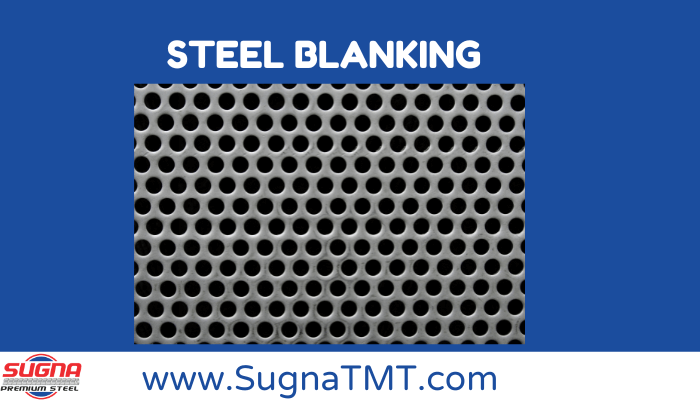teel blanking is a crucial process in manufacturing. It involves cutting flat metal sheets into shapes called blanks. These blanks are used to make various products. Understanding steel blanking is important for anyone involved in manufacturing. For the best results, always hire experts like Sugna TMT.
What is Steel Blanking?

Steel blanking is a metal fabrication process. It involves cutting flat sheets of steel into specific shapes and sizes. These shapes, called blanks, are used in further manufacturing processes. Blanking ensures precise dimensions and clean edges, which are essential for quality products.
Importance of Steel Blanking
Steel blanking is important for several reasons:
1. Precision
Blanking allows for precise cutting of steel sheets. This precision is crucial for creating parts that fit together perfectly in the final product.
2. Efficiency
Blanking is an efficient way to cut steel sheets. It reduces waste and optimizes the use of materials. This efficiency can lead to cost savings in the manufacturing process.
3. Quality
The blanking process produces high-quality blanks with smooth edges. This quality is essential for the performance and durability of the final product.
The Steel Blanking Process
The steel blanking process involves several steps:
1. Material Selection
Choosing the right type of steel is the first step. The steel must have the right properties for the intended use of the blanks.
2. Cutting
The steel sheet is placed on a blanking press. The press uses a punch and die to cut the steel into the desired shape. This step requires precision and care to ensure clean cuts.
3. Inspection
After cutting, the blanks are inspected for quality. This includes checking for defects and ensuring the dimensions are correct.
4. Finishing
The blanks may undergo finishing processes like deburring. This removes any rough edges and prepares the blanks for further manufacturing.
Types of Blanking Techniques
There are several techniques used in steel blanking:
1. Mechanical Blanking
Mechanical blanking uses a mechanical press to cut the steel. It is suitable for high-volume production and provides consistent results.
2. Laser Blanking
Laser blanking uses a laser to cut the steel. It is ideal for intricate shapes and offers high precision.
3. Fine Blanking
Fine blanking is a specialized process that produces high-precision blanks. It is used for parts that require tight tolerances and smooth edges.
Applications of Steel Blanking
Steel blanking is used in various industries:
1. Automotive
In the automotive industry, blanks are used to make parts like car bodies and engine components.
2. Electronics
In electronics, blanks are used to make components like circuit boards and enclosures.
3. Construction
In construction, blanks are used to make structural components and fittings.
Why Hire Experts like Sugna TMT?
Steel blanking requires expertise and precision. Hiring experts like Sugna TMT ensures high-quality blanks that meet your specifications. Sugna TMT uses advanced technology and processes to deliver the best results. Their experience and commitment to quality make them a reliable partner for your manufacturing needs.
Conclusion
Steel blanking is a key process in manufacturing. It ensures precision, efficiency, and quality in producing metal parts. Understanding the blanking process and its importance can help you make better decisions in your projects. For the best results, always hire experts like Sugna TMT. Their expertise and quality products ensure your manufacturing process runs smoothly and efficiently.

